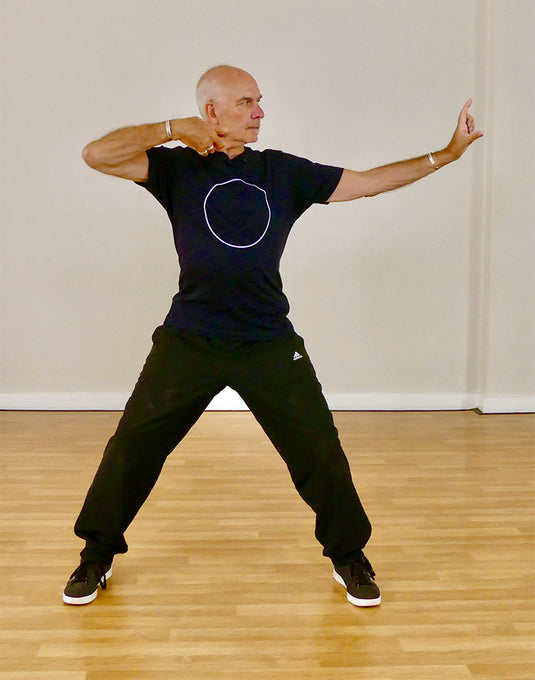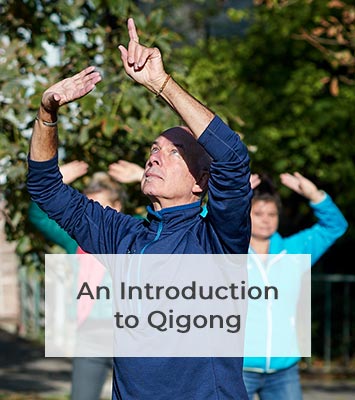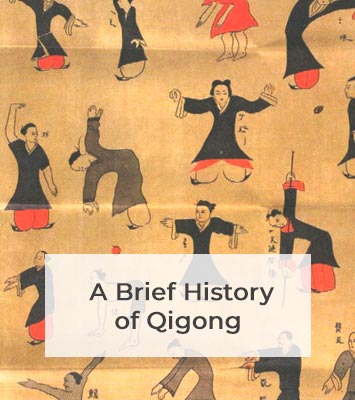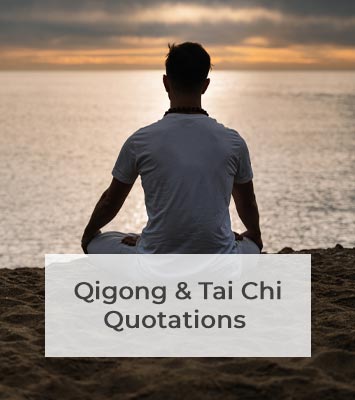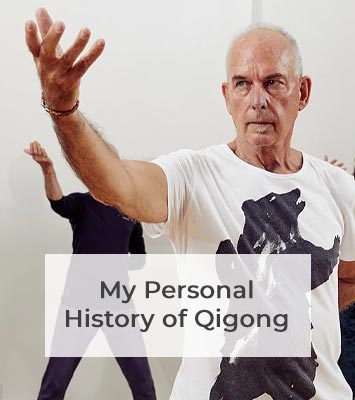Health
I have never experienced the most robust health (perhaps it was my degenerate habits in the 1960s) and for much of my life have felt the need to work to enhance it.
Because of the low stance adopted during practice and the slow weight shifting, qigong helps to strengthen the body, especially the feet, knees, legs, hips, waist and back. By strengthening the lower body in this way, the Kidneys are tonified and agility and balance improved. Whilst the lower body is strong and full, the upper body is soft and relaxed, indeed softness and relaxation are the underlying principle of all qigong practice. This softness in the upper body helps to sink the qi, counteracting the tendency of yang qi to rise excessively – a design flaw of the warm yang body. And the many and varied arm and shoulder movements, combined with turning, stretching and opening the waist, chest and sides, help promote free flow in the channels/fasciae and hence the internal organs.
One way that Chinese medicine defines health is the free and unobstructed flow of qi and blood. There are 60,000 miles of blood vessels in the human body and Western medicine too is increasingly interested in how to maximise blood circulation, especially the microcirculation. There seem to be two main ways to achieve this. One is aerobic exercise which activates the pumping action of the heart and oxygen exchange in the lungs, thus pushing the blood along its pathways. The other is softening and relaxing the vessels (and channels) thus allowing the spontaneous circulation of qi and blood that is the natural expression of life (this relaxation of the blood vessels has also been shown to result from happiness and laughter, alcohol, tea and sex). This flow of qi and blood/vasodilation is of course enhanced by slow, deep and relaxed breathing. Both ways – aerobics and relaxation – have their place, indeed some forms of qigong practice work with both, but relaxation is a lifelong practice that – with long application – affects underlying levels of tightness in the body throughout the 24 hours of the day, and further can be practised at an age when vigorous aerobic exercise may no longer be possible.
Qigong is almost always practised equally on both sides, and this, combined with immersion of awareness in the body and slow movements or even just relaxed standing, helps improve body alignment, adjusting and equalising the two sides of the body, enhancing proprioception and awareness of all parts of the body, and perhaps even helping harmonise the sides of the brain.
Connection
Perhaps one of the greatest attractions of qigong is that it is practised outdoors, in all weathers except heavy rain and howling winds. Standing beneath the sky/heaven, feet firmly rooted to earth, we are reminded of our place in the universe. Standing like a tree, imitating the movements of birds and animals, performing movements such as ‘playing with clouds’, ‘playing with waves’, ‘scooping water from the sea’ we tune into the wonders of the natural world and become part of it. And as we warm ourselves with practice and become friends with the elements, winter can turn into spring and spring into summer.
If we study Chinese medicine we are familiar with the idea of the body as an integrated whole. This gains a new depth of meaning when we start to experience it in the body. In qigong we work towards fully integrated movements; the body moves as one. The hands are ‘attached’ to the feet, the elbows to the knees, the shoulders to the hips, the head to the feet, the front to the back. And the more we practise, the more we start to feel that all this connection and movement is driven by the dantian, or the wu ji, like a great central cog that initiates the inevitable movement of the ever smaller cogs within the joints of the body,
Wuji
Wuji is a state of emptiness – that which exists before the manifestation of yin and yang. The central point of balance in the body is neither forwards nor backwards, neither to the left nor the right, neither up nor down – it is the place of infinite potential before any of these dualities manifest and it is the place all movement starts from and returns to. Resting in, and moving from, the wuji lends meaning to all the movements of qigong and offers a deep experience of rest, nourishment and renewal.
Yinyang
From wuji comes yin and yang and it is the simple attunement of ourselves with yin and yang that is the core of qigong – integrating strength with gentleness, rising with descending, coiling with uncoiling, opening with closing and so on. Simple yet profound because yinyang is of course the core principle of the universe we belong to.
Awareness
It is the seamless integration of body, breath and mind/awareness that ‘defines’ qigong. Awareness may involve dwelling in the body or any part of the body, or simply being present to the external environment (breeze, smell, sound etc.). This being in the moment – which is the starting point and perhaps end of all meditation – we now know brings about clear physical changes in the brain. Areas associated with positivity and emotional control grow and develop greater gyrification (folding within the brain). Thus we cultivate a healthy and competent brain and become better able to resist the swirls and tides of negative emotion.
No aim
I’d be dishonest if I said I didn’t have an aim in doing qigong – like most of us I want to be wise, healthy, buff, irresistible and immortal. But I remember sitting on a beach once discussing the differences between qigong and yoga. Of course these are very much generalisations as there are hundreds of different kinds of qigong and many kinds of yoga. One difference that was apparent was that the limbs in qigong tend to be relaxed and rounded and, unlike much yoga, are rarely extended fully. In qigong terms, full extension is less effective at promoting smooth flow. But a more significant difference seemed to me to be that much yoga practice approaches an asana as a posture to be attained and held. The movement is usually rapid and functional from the starting position to the full posture – the extension, the bend, the balance – which is the aim, the end point, the attainment. Qigong is much more concerned with continuous flowing movement, no part of which is more important or more of an aim than any other. I think this difference is very important physically, psychologically, even spiritually. I am struck by the fact that yoga has been much more successful in appealing to Westerners than qigong, and one reason may be that it ties in well with the Judeo-Christian foundations of our culture which we absorb without even knowing that we do. Self-improvement, reaching for the light, the heavens, cleansing and detoxifying the body, getting somewhere … we take many of these ideas and desires for granted. In qigong, moving from the wuji, up is no more important than down, the end no more than the beginning, everything is circular, continuous and therefore all there is, is the flowing present.

